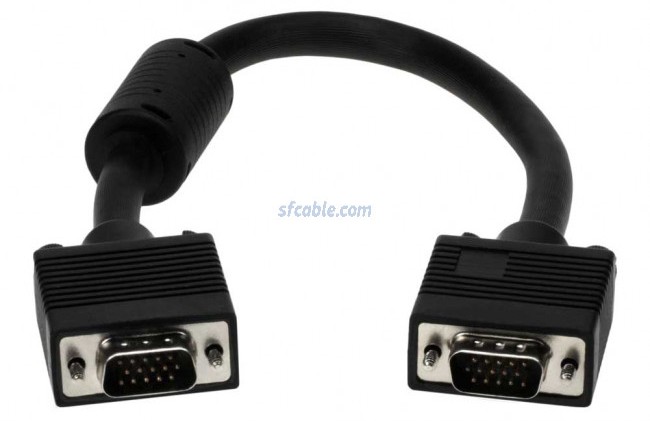All You Wanted to Know About Monitor Cables
How does today’s economy thrive? I would say, there are two major factors responsible for it. One, the rise in population. And two, the plenteous amount of manufacturing companies. Both together, have given rise to the current economy and the competition between them.
This scenario has led to the development of products that have a similar purpose. However, the names of these products differ. Also, the technology which drives them differs. This creates a state of confusion among the buyers when they are looking for the availability a of the options for buying a particular product.
 Today, we’ll talk about Monitor Cables. They’re nothing but the connectors that connect a monitor with the CPU of a computer. When you go to buy these cables, you’ll be amazed at the available types and their abbreviations. Also, you can insert these cables into multiple ports of computer based on its type.
Today, we’ll talk about Monitor Cables. They’re nothing but the connectors that connect a monitor with the CPU of a computer. When you go to buy these cables, you’ll be amazed at the available types and their abbreviations. Also, you can insert these cables into multiple ports of computer based on its type.
Some are technically advanced, some have better features. And your computer system offers more than one connection options. So, which of these is best suited for you? To answer this question, you need to have some knowledge regarding these. Let’s know about the types in detail:
DVI – Digital Video Interface
When monitor needs digital connectivity, DVI (Digital Video Interface) is the most common form of connection to use. DVI uses both digital and analog video signals. It has 28 pins out of which digital signal utilizes 24 pins.
And the rest, are meant for analog signals.
The specifications further include the DVI single and DVI dual link options. The DVI dual link supports resolution up to 2560 by 1600 pixels. VGA Cable generates noise and artifacts. Now, the task of DVI Monitor Cable is to use digital signals and nullify them.
VGA Connections
VGA is an abbreviation of Video Graphics Array. This monitor cable is capable of delivering analog video signals and was once very common on the CRT & older LCD monitors. It was the most standard cable used to connect computers with the monitor.
As the world has advanced into the digital age, the usage of VGA has faded. It consists of 15 pins in 3 rows. Each of these rows is correspondent to three different color channels. The color channels used in display are; red, green and blue.
HDMI Cables
In the past decade, the demand of high definition multimedia had increased exponentially. The intent behind introducing HDMI Cables was to fulfill these demands. And how is HDMI different from DVI & VGA counterparts? Well, it sends both digital video and audio signals together.
These signals are digital only. And thus, compatible only with newer devices having high definition broadcasting. It provides the necessary quality for the digital signals in the TV and home theater equipment. These days it has gained popularity in the computer industry as well.
DisplayPort and Mini DisplayPort
It does lack from popularity but its digital signal connection carries the same resolution as that of the level of HDMI or DVI. It generally features on Apple products including the iMac, MacBook Pro, Mac Mini. Some other monitor manufacturers with limited market penetration also support Display Ports on their products. It contains a 20-pin interface for converting DisplayPort signal into the DVI or HDMI.



Comments
Post a Comment